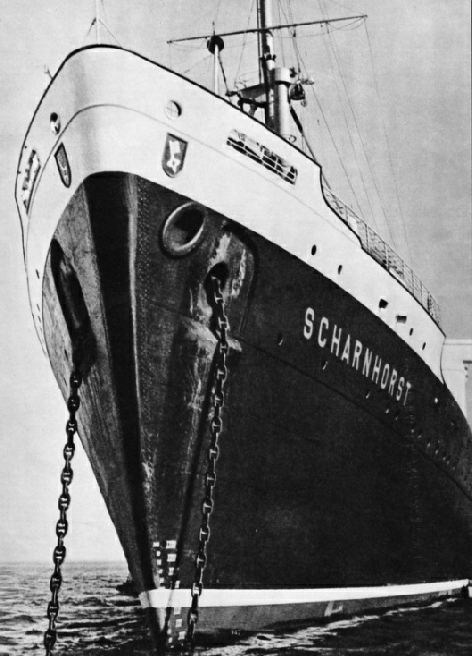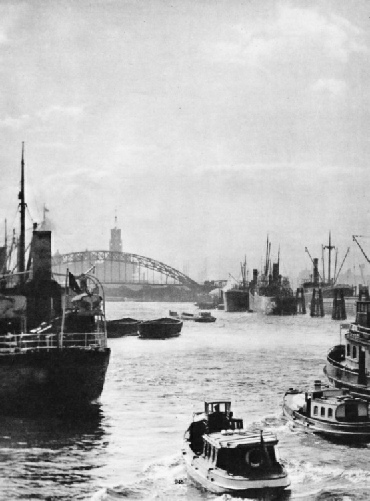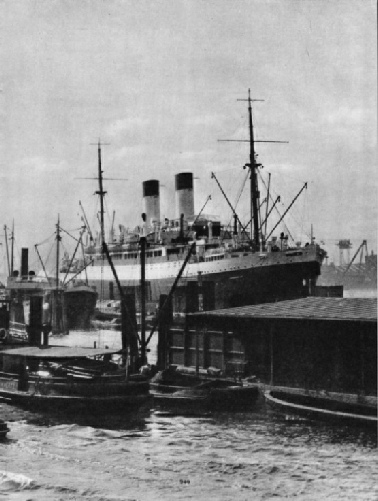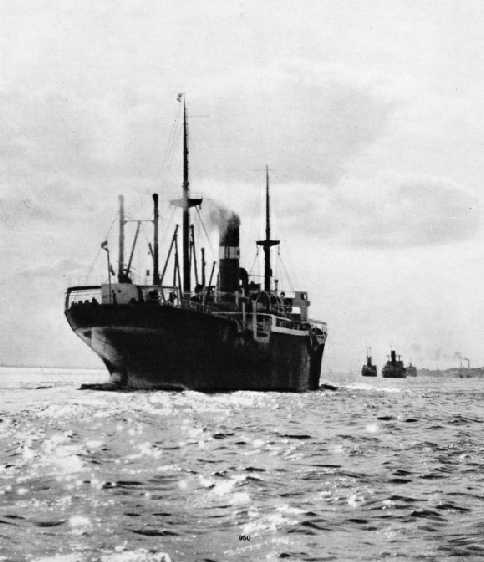
© Shipping Wonders of the World 2012-



Part 30
Part 30 of Shipping Wonders of the World was published on Tuesday 1st September 1936.
It included a centre photogravure supplement featuring German shipping, which formed part of the article of the same title.
The Cover
This week’s cover shows the Normandie. Completed in 1935 the Normandie has a gross tonnage of 86,496.”
The story of the Normandie is described in the chapter “The Triumph of the Normandie”. This cover illustration was later reproduced as the colour plate in part 53.

Contents of Part 30
Ross in the Antarctic
Concluding section of this article from part 29.
The Cable Ship
These craft are employed for repairing the marine cables which form the vital links of world communication. The ships have two main functions. They lay the cable or they pick up the cable and make any repairs that may be necessary after damage in a storm. The Faraday shows that she has four cable tanks.
This is the twenty second article in the series on Merchant Ship Types.
’Twixt Highlands and Hebrides
On the West Coast of Scotland and in the Islands, where there are few railways and where roads are indifferent, transport depends almost entirely upon the sturdy packets which range from early paddle steamers to modern diesel-electric ships. This chapter describes the services maintained by the MacBrayne boats, and gives particulars of some of the best-known vessels.
German Shipping
Crippled as Germany was by the war of 1914-18 and by the surrender of the greater part of her merchant tonnage, in reparation for the damage done by her submarines. Thus her shipping tonnage dropped to almost nothing. The Cunard White Star liner Majestic, to quote one well-known example of a surrendered vessel, was originally the Bismarck. A vigorous policy of reconstruction was embarked upon, however, under State control and, due chiefly to these Government measures, the German fleet can to-day claim to be one of the most efficient in the world.
This article is the sixth in the series on Sea Transport of the Nations.
German Shipping (photogravure supplement)
Hamburg Harbour
HAMBURG HARBOUR is one of the busiest centres of German shipping and vessels of many nationalities may always be seen there. The harbour is always thronged with ships of many types, large and small. The liner shown in the right background is the Monte Cervantes, a Hamburg-Sudamerika vessel of 13,913 tons gross, built in 1927 and wrecked off the Patagonian coast on a cruise in 1930. She was 500 ft 7 in long, with a beam of 65 ft 9 in and a depth of 37 ft 11 in.
The Scharnhorst
FOR THE FAR EASTERN SERVICES of the North German Lloyd Line, three modern liners were built in 1935, the Scharnhorst, the Gneisenau and the Potsdam. This striking photograph shows the Maierform bows of the Scharnhorst. A twin-screw vessel of 18,184 tons gross, she has a length of 625 ft
7 in between perpendiculars, a beam of 74 ft 1 in and a depth of 41 feet. She carries 152 first-class and 144 tourist-class passengers. Two turbo-generators supply alternating current to her electric motors, which have a horse-power of about 26,000.
Contents of Part 30 (continued)
Exploring the Ocean Depths
During a voyage that circumnavigated the world in 1872-76, HMS Challenger made a continuous survey of the depths of the sea, its temperatures and currents, and obtained extraordinary specimens of the vegetable and animal life that exists at astounding depths. The Royal Society was the chief promoter of this expedition. A distance of nearly 70,000 miles was covered during the voyage, which involved the circumnavigation of the globe. In addition to her other calls, the Challenger visited the inhospitable island of Kerguelen, in the South Indian Ocean, previously visited in 1776 by Cook and in 1840 by Ross. From Kerguelen the Challenger went south, crossing the Antarctic Circle. On March 23, 1875, a depth of 4,475 fathoms (26,850 feet) was recorded in the Pacific. Besides recording the depths at various points, the Challenger expedition noted differences of temperature (thus making important discoveries about the currents below the surface), the character of the sea-bed and the animal and plant life to be found there.
Modern Marine Boiler Types
Considerable improvement in the power and efficiency of marine boilers followed upon the adoption of the Scotch boiler about 1870 and has continued with the subsequent development of the water tube boiler.
This chapter is the ninth article in the series on Marine Engines and Their Story.
Drake and the Golden Hind
Although Sir Francis Drake was the second man - and the fist Englishman - to circumnavigate the world, his importance in the history of the sea does not rest solely on this feat. His fine seamanship and adventurous spirit set an example to British seafarers which was largely responsible for the rise in Tudor times of British sea power.
This chapter is the fifth article in the series on Supreme Feats of Navigation. The article is concluded in part 31.



The Geierfels
HOMEWARD BOUND, the cargo vessel Geierfels, 7,605 tons gross, steams into Hamburg harbour. With her sister ship Lichtenfels, 7,566 tons gross, the Gierefels belongs to the Hansa Line’s fleet of cargo vessels. Built at Bremen in 1930, she has a length of 503 ft 9 in between perpendiculars, a beam of 62 ft 3 in and a depth of 27 ft 8 in.
